Pine trees and cypresses are a gorgeous backdrop
Rome is an interesting city with many sights, but it is also worthwhile to explore the city outside its walls: you'll find interesting archeological sites there too, often in arcadic landscapes. In the Tivoli Hills and in Ostia Antica the Roman era comes alive, just like on the Via Appia. In Cerveteri, with its Etruscan tombs, you go even farther back in time.
Travelogue & photos: Luk Carion
On our last visit to Rome the Vatican Museum was on our list of highlights, but when we arrived there, in the afternoon, there was a line outside of almost a kilometer. I didn't feel like waiting for hours to see the Sixtine Chapel (which was our main objective).
So today we get up extra early and at 8 AM we are outside the museum; there still is a line of around 200 meters. The doors open at 8:45 AM and the line begins to move surprisingly fast, so we enter the museum at 9 AM already.
The pomp and circumstance that can be seen here, borders on the unbelievable. The highlight is, of course, the Sixtine Chapel. In this space, cardinals have gathered in conclave for centuries to elect new popes.
We think that the display of these riches by the Catholic hierarchy, is somewhat contradictory, especially when we hear the pope a few days later, on Eastern, make an appeal for an effort to stop poverty in the world. It seems to be "Listen to my words, but don't look at my deeds." The beggars in Rome (and there are many) will also have their thoughts on this subject, I assume.
Tivoli
For centuries, it was a famous summer resort
A bus takes us quickly outside the city walls, to Tivoli, 30 km northeast of Rome. Tivoli is a beautiful old town on the top of a hill, from where you have a great view of the surroundings.
Tivoli was a famous summer resort for centuries: rich Romans were attracted to the cooler climate of the Sabine Hills and built their villas here.
Around 1550, Cardinal Ippolito II did what the wealthy in ancient Rome did: this descendant of the rich d'Este family commissioned a new mansion in Tivoli. Money was no problem and he hired one of the best architects to convert a former monastery into a sumptuous palace.
After buying out lots of small landowners, he had vast gardens layed out with terraces, caves, classic sculptures, ponds and hundreds of fountains.
From the palace's terrace we enjoy a great view of the gardens. During our walk we pass the Diana fountain. Diana, who is usually represented as the goddess of hunting, is revered here obviously as a fertility symbol. The Unesco has placed Villa d'Este on the World Heritage List.
We take the bus and drive back, downhill, to the valley. We get off the bus in the first village: here we should find Emperor Hadrianus' Villa Adriana.
The word "villa" is misleading: it is a complex with thermal baths, theatres, libraries, vast accomodations for guests and staff, geometric gardens with fountains and ponds.
A scale model at the entrance gives a clear impression of what the place looked like centuries ago. The main buildings are indicated with signs.
One of the nicest buildings is the maritime theatre, a round basin with an island in it, accessible via a turnbridge. This was Hadrianus' favorite spot, to where he would retreat to paint and read. The grounds of the villa, with here and there remains of columns between olive trees and cypresses, are a great backdrop for a picnic.
Ostia Antica
At its pinnacle, this city had 100,000 inhabitants
A visit to ancient Ostia (Ostia Antica) gives a good picture of what life must have been like in an average Roman city. People of all classes and walks of life lived here.
At its pinnacle, the population of this city was 100,000, but the silting up of the Tiber (Ostia is from the Latin word "Ostium", which means estuary), spelled the end of the city, because it changed the course of the river.
Because Ostia was buried in sand for centuries, the city was preserved very well. It's easy to imagine slaves hurrying on the main street Decumanus Maximus and citizens evading swaying carts and carriages. Merchants had their businesses in the arcades on the sides of the street.
We also see several public bathhouses, a gorgeous theatre and behind it the square of the guilds, which had their offices here.
Mosaics floors tell stories about the harbor (a picture of an elephant indicates that wild animals were shipped from Africa to Ostia for the gladiator games in the Colosseum in Rome). Ships, wheat (from Sicily and Africa)and fish are often returning motives.
Behind the main street are the houses of the inhabitants: free- standing houses (domi) for the rich, apartment buildings (insulae) for the rest. These last ones have been preserved very well. They had up to 5 floors. On the first floor there usually was commercial space.
A good example is Casa di Diana. This large insula had shops on the first floor, apartments on the second and on the third floor luxury apartments with balconies.
Opposite the insula is Thermopolium, which used to be a bar. A faded fresco shows the prices for eggs, fruit and vegetables. There is a marble counter where customers bought wine.
During our two-hour walk we see a laundry, a bakery, the fire station and warehouses for grain. With a little imagination it's possible to form a complete image of this city as it must have looked like almost 2,000 years ago. And there is no distracting mass tourism here.
The pine trees, the spring green and the first flowers are a wonderful backdrop for this "forgotten" city. So far, less than half of Ostia has been excavated, so we'll have to come back for another visit.
Palatine Hill
Romulus and Remus supposedly founded Rome in this spot
We take the train back to the heart of ancient Rome: the Forum Romanum. In contrast to Ostia this is rather a puzzle of (overturned) columns and other remains. You almost have to be an archeologist to be able to imagine what it was like in antiquity. The remains of the Forum date from different centuries.
The Palatine Hill, one of the seven hills on which Rome is built, offers a great view of the Forum. Romulus and Remus, nursed by a wolf, supposedly founded Rome on this hill. Recent excavations proved that there was a settlement here around 600 BC, which gives the legend a semblance of truth.
Palatine Hill was a favorite of famous Romans, who owned villas here: the orators Cicero and Hortensius, the later emperor Augustus and the politicians Crassus and Catullus.
It is a lovely place, shady and green, and there are many benches to rest on and enjoy the surroundings.
A large part of Palatine still has to be excavated. But some villas are already accessible now.
Interesting and very romantic is the Orti Farnesiani, a Renaissance garden, layed out in the sixteenth century. Its two pavilions offer a good view of the Forum Romanum. The area is lined with orange and pine trees.
After a rest on this beautiful hill we descend to the Colosseum, a highlight that fires the imagination. Not only gladiators battled to the death here, but also many wild animals from Africa (the elephant from Ostia comes to mind) died in the sand-covered arena.
It's good to know that these "games" lasted a lot longer than a soccer match; they could take up to three months...
Like Japanese tourists we continue on to the Trevi fountain, Pantheon, Piazzia Venezia - where we visit Aracoeli Church - and we climb the V. Emmanuel memorial (the unknown soldier).
Our feet hurt, so we find a café with outdoor seating in quieter surroundings near the Tiber. It's very crowded in Rome, maybe it always is, but especially during the week of Eastern.
Cerveteri
An Etruscan necropolis in green surroundings
Ladispoli, a nice beach resort, is hardly an hour by train from Rome. There we take the bus to Cerveteri to walk in the tracks of the Etruscans. At the bus station begins a trail of signs that lead us to a slope at the highest point of the village.
In quiet, green surroundings, with a panoramic view of the hills on one side, the sea in the distance on the other, we enter the almost three thousend years old necropolis. The silence here is only broken by bird songs. This spot hasn't been discovered by mass tourism yet, which is a pity, in a way: there is so much to see and experience here.
There are few traces of "living" Etruscans: their homes and temples were wooden constructions. Fortunately the Etruscans were strongly focussed on the hereafter, so many objects were found dat shed light on the way of life of the people who lived here between the seventh and eighth centuries BC.
The Etruscan believed, like the Egyptians, in a continued existence after death. The deceased continues living his former life in his tomb. Because of this, the tomb should be furnished as an eternal place of residence. This is done with burial gifts: memories and utensils from the person's former life.
The Etruscans put their dead in sarcophaguses, which basically are stone coffins, often with a cover which depicts the deceased or the deceased couple. The sarcophaguses are placed in a burial chamber, usually hewn from the rock bottom and covered with a mound of soil. These tombs and burial mounds are built in an organised pattern, there are streets between them, which creates real "cities of the dead", which is what necropolis means.
We wander through the necropolis, descend into crypts, sit on stone seats... The stones of the roads we walk on are worn by all the walking and transportation through the cemetary. It all feels unreal.
After our visit we have a drink in a simple, local outdoor café and enjoy the view of the green hills, our drinks, the sun. And we daydream about what it was like, here, three thousand years ago.
We walk back downhill, to the town center and visit the Etruscan Museum: lots of vases, but very little information about this ancient civilization. The best pieces are kept in Rome, in the Vatican Museum and in Villa Giulia.
There are also wineries here in Cerveteri. In a kind of garage we find our host Bruno who lets us taste local (white) wine. We order a small caraffe: the taste of this wine reminds us of cider.
Some villagers join us and offer us some home-made bread. We enjoy everything and take a picture of them, and then they offer us another caraffe of white wine. This company of natives makes us happy: Rome's commercialism is far away.
We take the bus back to Ladispoli, a nice beach resort. Contrary to Ostia Lida (not far from Ostia Antica), where we were last time, the whole beach is public: no zones where you have to pay to go to the beach (at least at this time: spring).
We enjoy the surf, the scent of the sea and the glow of the spring sun.
Afterwards we have tasty ice cream and take the train back to Roma Termini. We will have dinner Trastevere, the other side of the Tiber river, where you still can find real Italian restaurants and get a great meal for a democratic price.
Via Appia
The legions left Rome over these rough stones
A long, narrow road from Rome to Brindisi, lined with cypresses and pine trees: that is what it looked like two thousand years ago and that's how it still looks. Large, rough stones that show traces of the wagons that rattled over them centuries ago and that were cut out of the basalt-like layers of lava in the nearby Alban Hills.
Not much has changed over the last 2,000 years. This makes Via Appia a memorial as well as an archeological site of the first order. Because the law didn't allow burials inside the walls, many tombs where built along the roads that led out of the city. The closer the tomb to the city walls, the richer the deceased.
We walk on this piece of history and see many tombs and memorials, often still in good condition. It's like a catharsis to walk in this centuries-old street between the fields: this is where the slaves in the Spartacus movie were crucified. This is where Rome's legions left for new conquests. This is where the wagons with stones and other building materials entered Rome.
The catacombs (Christian) are nearby, but we don't feel like waiting for a guide (only guided tours are available) and we take the bus back to Roma Intra Muros to another, maybe just as macabre and sinister: Sancta Maria della Concezione.
In this austere church the horror of death is expressed in the crypt: under the slogans "Here lies dust, ashes, nothing" and "We once were like you and you will once be like us" the bones of over four thousands skeletons of Capucine monks lie here to create this macabre Memento Mori, which started at the end of the seventeenth century.
We take the subway and decide to visit the basilica San Paolo fuori le Mura (literally: "outside the walls"). This church was built in the spot where Paul was decapitated. Until the construction of the Saint Peter it was the largest church in Rome and without a doubt the most beautiful. It is an immense building.
The gorgeous columns of the small cloister are among the most beautiful in Europe. The large nave of the basilica is separated from the aisles by eighty heavy columns.
We continue on to the Aventine Hill, one of the seven hills of Rome. It is one of the most quiet districts of Rome. At the foot of the hill, two small temples on the Forum Boarium and the Circus Maximus are reminders of ancient Rome.
We approach the Janus Arch near the Forum Boarium: it stands near the former docks. Its shade was an ideal spot for merchants and customers to do business. We first visit the Sancta Maria church in Cosmedin; it is a nice, austere church (Byzantine) which unfortunately is scaffolded.
There is a long line for the "Mouth of Truth": according to medieval legend the mighty jaws of this statue snap shut around the hand of every lyer about marital unfaithfulness.
We by-pass the line of Japanese visitors who want to test their hands and enter the church. Unfortunately it is being restored, so we have to confine ourselves to taking one picture of an aisle with an upper level, a kind of gallery where women are seated.
We continue on our way up, to the Aventine Hill with the magnificent Sancta Sabina basilica. Next to this church we find a statue like the one at the Cosmedin church: we stick our hands in and...
Next to the Sancta Sabina basilica is Parco Savello, beautifully layed out with orange and pine trees. It is an oasis of peace and quiet and also offers a great view of the city.
In the evening we descend to the Tiber river and Tiber Island. It's wonderful to sit in the sun next to the rapids and eat ice cream. Later in the evening we will have dinner in Trastevere, on the other side of the Tiber: a delicious meal, many memories... Tomorrow we're headed back to Brussels.





















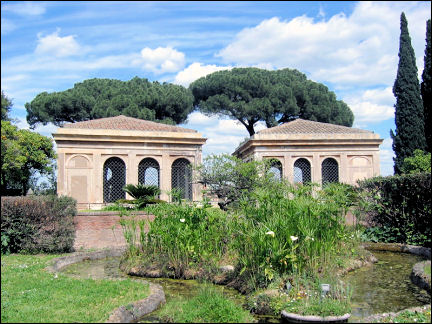
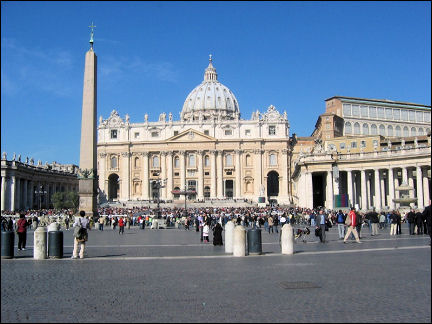
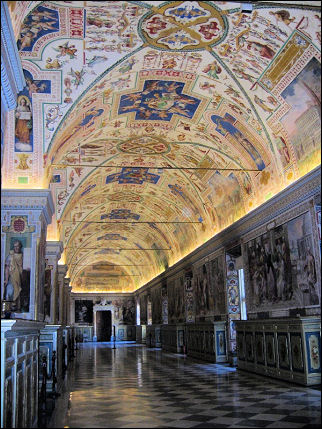
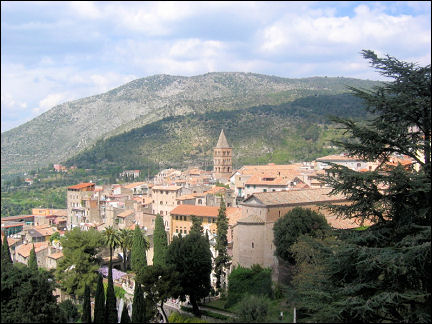
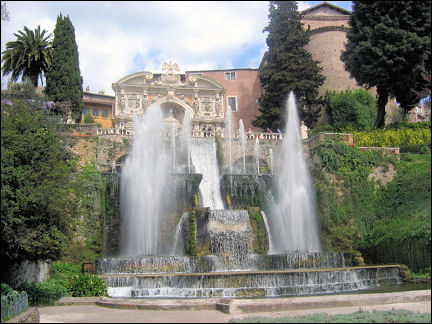
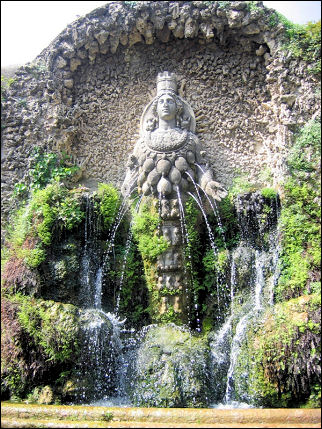
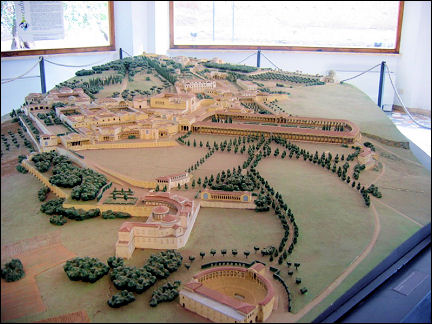
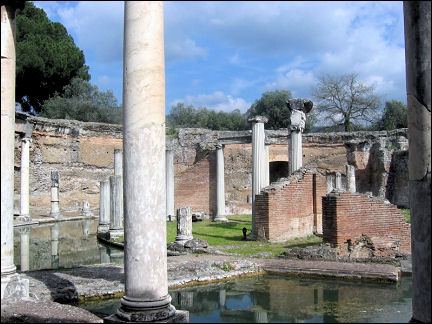
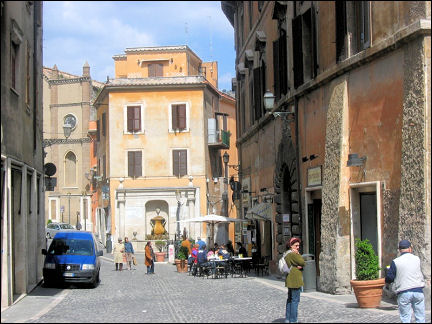
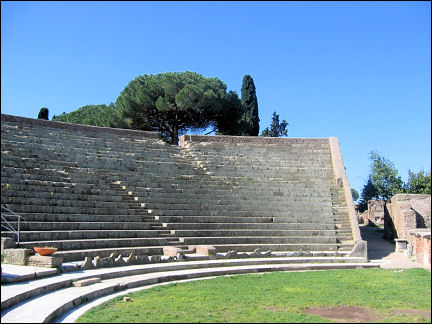
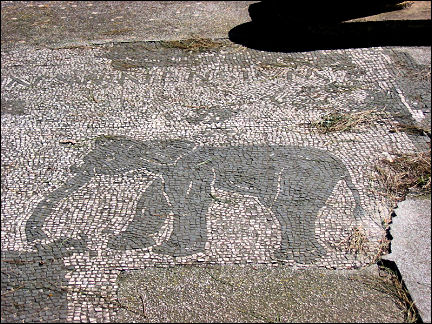
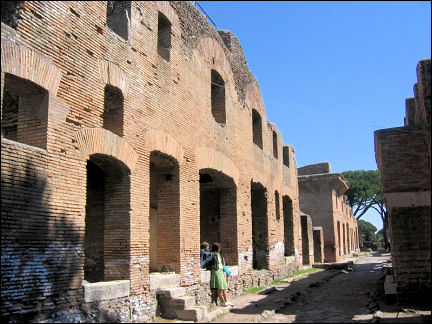
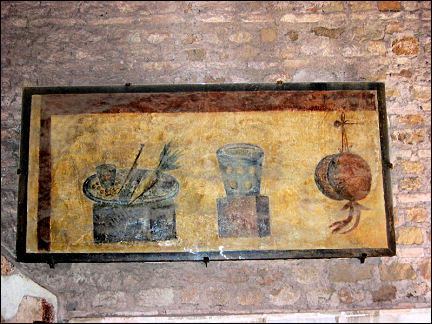
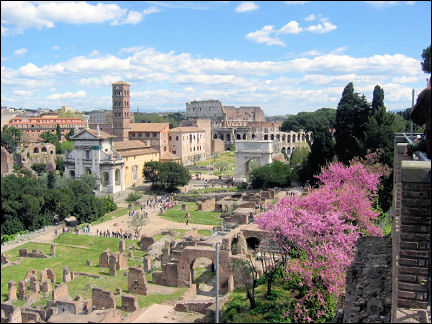
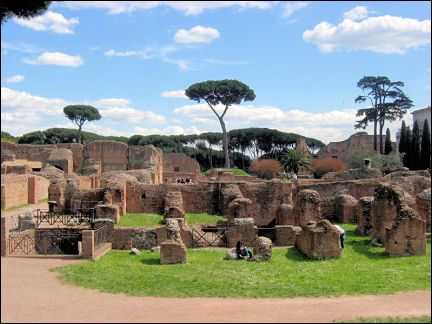
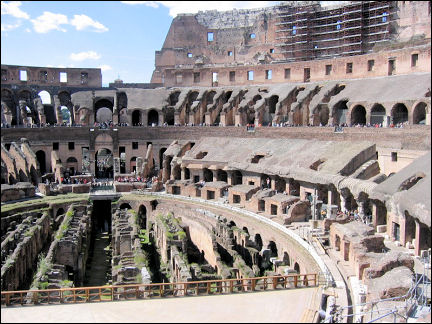
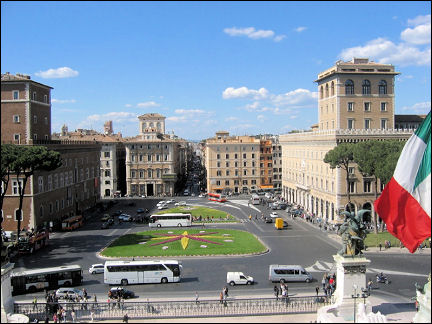
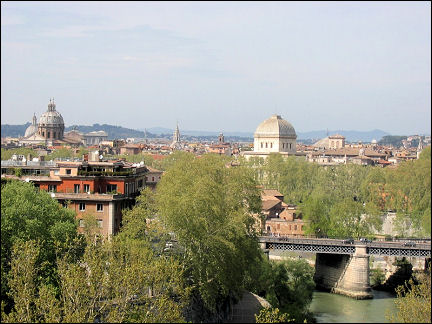
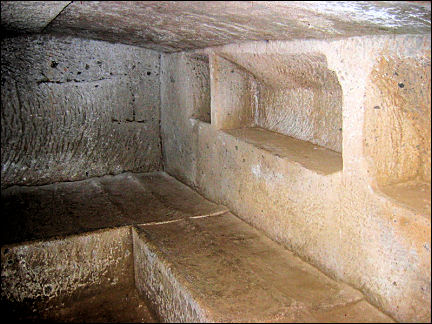
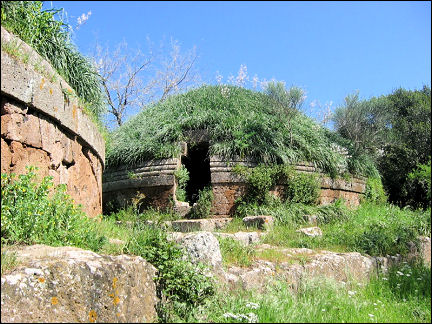
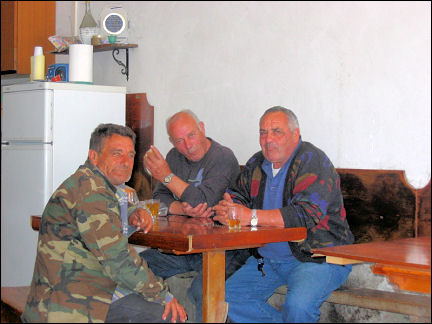
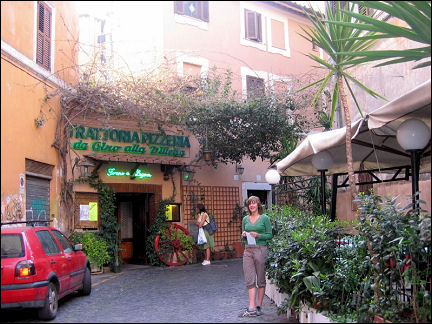
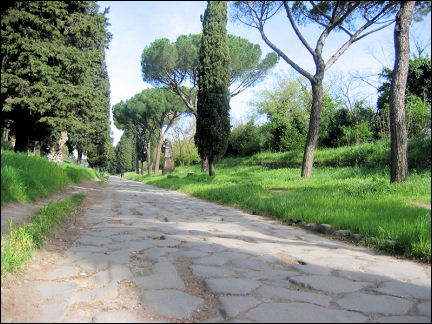
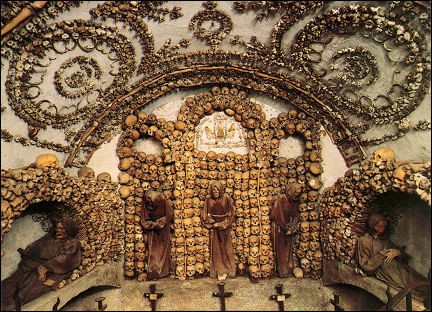
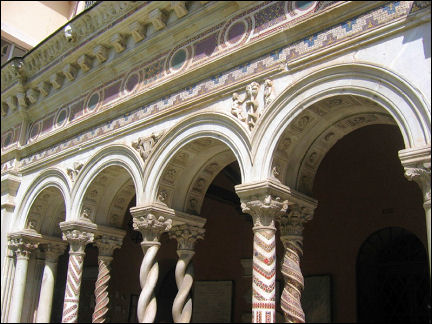
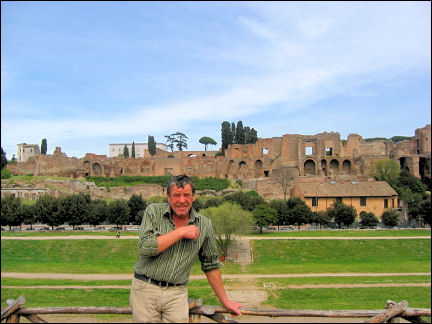
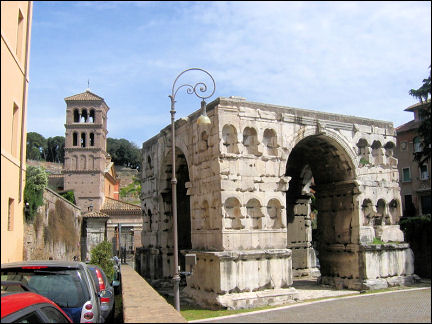
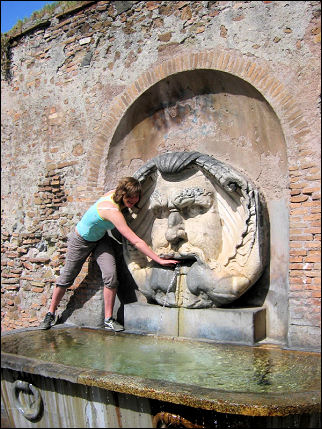

 Positano bites deep. It is a dream place that isn’t quite real when you are there and becomes beckoningly real after you have gone. Its houses climb a hill so steep it would be a cliff except that stairs are cut in it. I believe that whereas most house foundations are vertical, in Positano they are horizontal. The small curving bay of unbelievably blue and green water lips gently on a beach of small pebbles. There is only one narrow street and it does not come down to the water. Everything else is stairs, some of them as steep as ladders. You do not walk to visit a friend, you either climb or slide.
Positano bites deep. It is a dream place that isn’t quite real when you are there and becomes beckoningly real after you have gone. Its houses climb a hill so steep it would be a cliff except that stairs are cut in it. I believe that whereas most house foundations are vertical, in Positano they are horizontal. The small curving bay of unbelievably blue and green water lips gently on a beach of small pebbles. There is only one narrow street and it does not come down to the water. Everything else is stairs, some of them as steep as ladders. You do not walk to visit a friend, you either climb or slide.